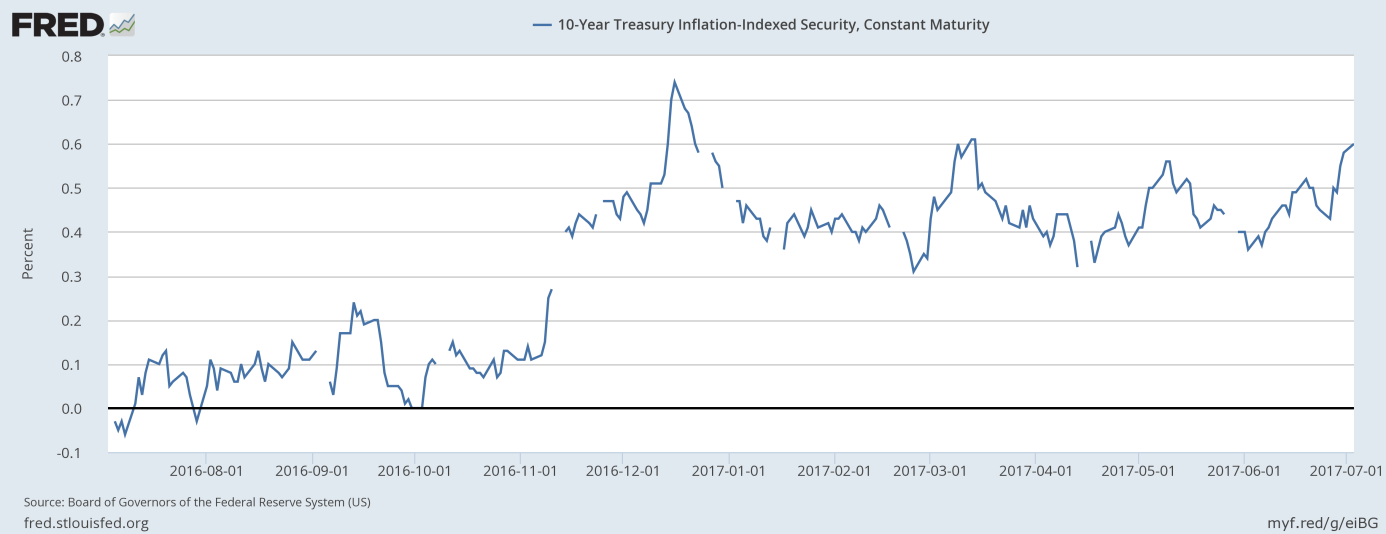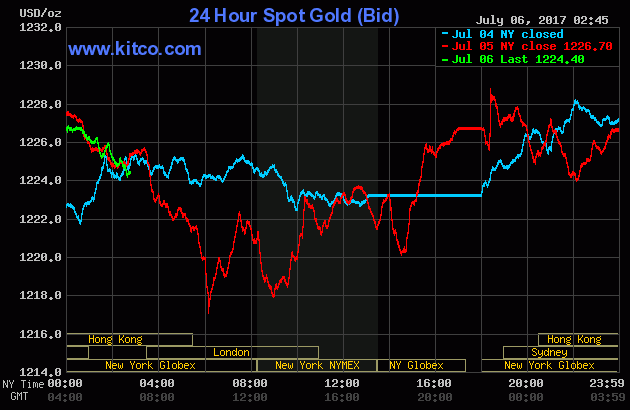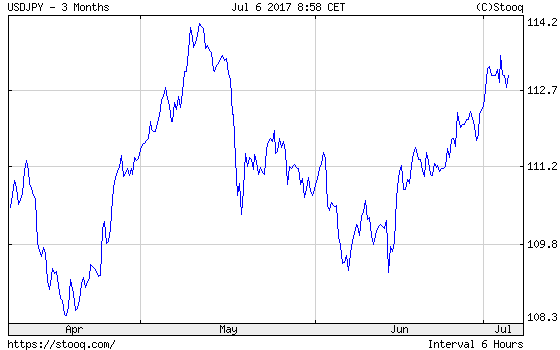Yesterday, the minutes of the Federal Reserve’s June meeting were released. What do they say about the Fed’s stance and what do they mean for the gold market?
The recent FOMC minutes hardly add anything new. The FOMC members agreed that the labor market had continued to strengthen and that economic activity had been rising moderately so far this year. Participants expected that inflation would remain low, but it would stabilize around the target over the medium term. Some analysts believe that the minutes were slightly dovish, as they suggest tensions over the inflation shortfall. However, we do not buy that interpretation. Surely, “several participants expressed concern that progress toward the Committee’s 2% longer-run inflation objective might have slowed and that the recent softness in inflation might persist.” But the consensus medium-term outlook for inflation was little changed:
Most participants viewed the recent softness in these price data as largely reflecting idiosyncratic factors, including sharp declines in prices of wireless telephone services and prescription drugs, and expected these developments to have little bearing on inflation over the medium run. Participants continued to expect that, as the effects of transitory factors waned and labor market conditions strengthened further, inflation would stabilize around the Committee’s 2% objective over the medium term.
As a reminder, the Fed hiked interest rates at that meeting – so much for the alleged split among policymakers. Moreover, a number of participants pointed out that the improved prospects for foreign economic growth reduced downside risks to the U.S. economic outlook. The improved global economic outlook is bad news for the gold market, as it would provide support to risky assets at the expense of safe-havens.
However, the minutes showed a lack of consensus among the committee on when the central bank will start unwinding its balance sheet.
Several preferred to announce a start to the process within a couple of months; in support of this approach, it was noted that the Committee’s communications had helped prepare the public for such a step. However, some others emphasized that deferring the decision until later in the year would permit additional time to assess the outlook for economic activity and inflation.
Investors are expecting now that the central bank will start reducing its balance sheet by September. Meanwhile, the next rate hike is predicted by the markets not earlier than in December. Unless the Fed members manage these expectations, the most likely scenario is that the beginning of the balance sheet reduction will precede the next hike.
As the minutes did not change the outlook for future monetary policy significantly, gold prices were little moved. As one can in the chart below, the yellow metal continued its downward trend, caused by the rebound in the U.S. dollar, rising real interest rates, a stronger risk appetite and hawkish central banks.
Chart 1: Gold prices over the last three days.
The bottom line is that the June FOMC minutes were released and there were generally a non-event for the gold market, as they did not contain any surprises. The Fed is still on track to start unwinding its balance sheet and raise interest rates once more this year. It implies that the current bearish outlook for gold is likely to remain in place. The appreciation of the U.S. dollar combined with rising real interest rates (see the charts below), not to mention the hawkish turn among the major central banks and the improved risk appetite, are fundamentally negative for the yellow metal. Stay tuned!
Chart 2: The USD/JPY exchange rate over the last 3 months.
Chart 3: U.S. real interest rates over the last 12 months.



